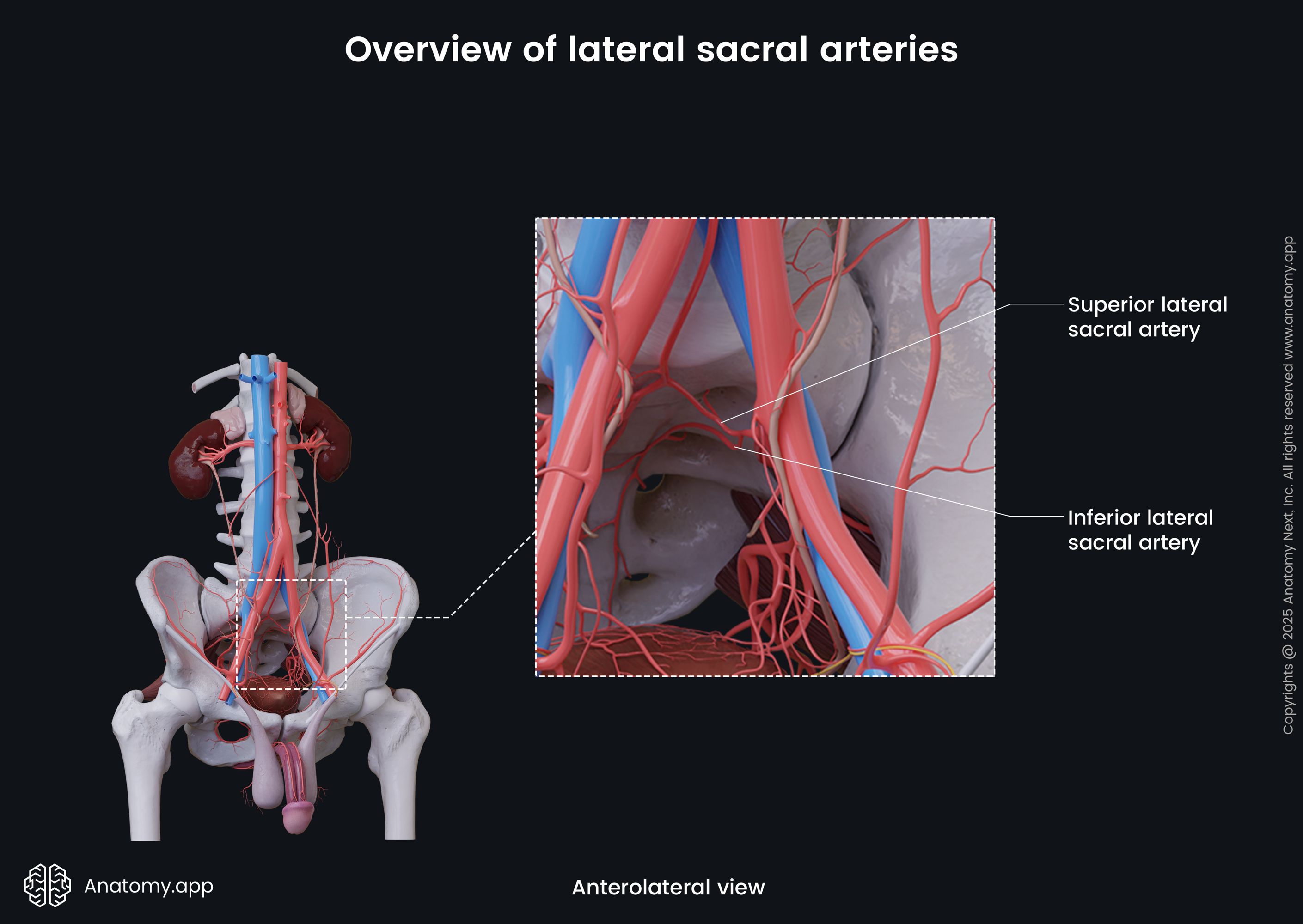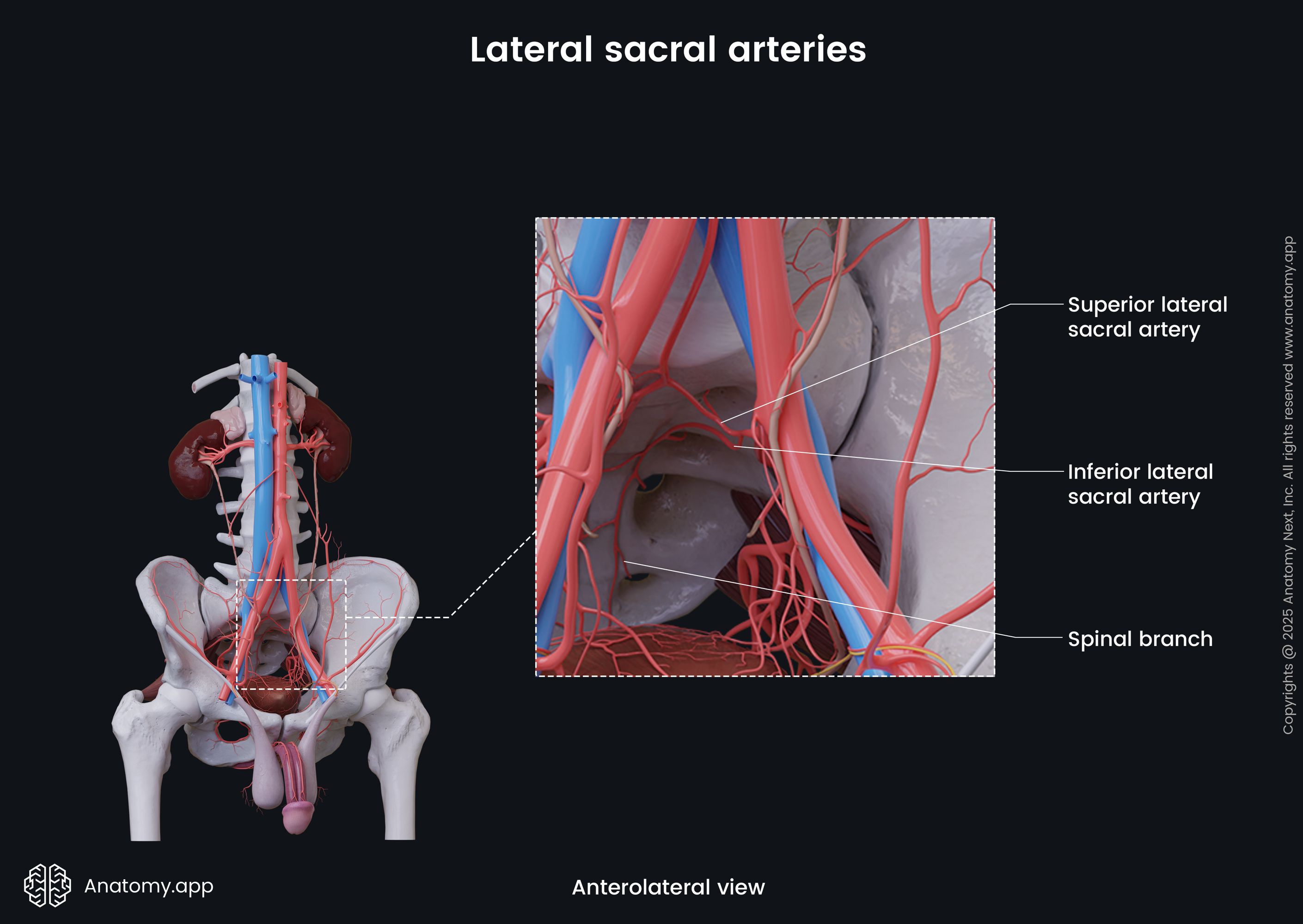- Anatomical terminology
- Skeletal system
- Joints
- Muscles
- Heart
- Blood vessels
- Blood vessels of systemic circulation
- Aorta
- Blood vessels of head and neck
- Blood vessels of upper limb
- Blood vessels of thorax
- Blood vessels of abdomen
- Blood vessels of pelvis and lower limb
- Arteries of pelvis and lower limb
- Veins of pelvis and lower limb
- Blood vessels of systemic circulation
- Lymphatic system
- Nervous system
- Respiratory system
- Digestive system
- Urinary system
- Female reproductive system
- Male reproductive system
- Endocrine glands
- Eye
- Ear
Lateral sacral arteries
The set of lateral sacral arteries (Latin: arteriae sacrales laterales) arise from the posterior trunk of the internal iliac artery. They supply blood to the pelvic and perineal muscles, skin in the sacral region, as well as the sacrum and contents of the sacral canal. There are usually two lateral sacral arteries on each side: superior lateral sacral artery and inferior lateral sacral artery.


The superior lateral sacral artery runs medially into the first or second anterior sacral foramen, entering the sacral canal. Then it leaves the sacrum through the dorsal foramen of the sacrum.
The inferior lateral sacral artery passes obliquely anterior to the sacral anterior spinal rami. Then it passes downward to the sympathetic trunk. The inferior lateral sacral artery gives off branches that enter the anterior sacral foramina and then continue the same way as the branches of the superior lateral sacral artery.

